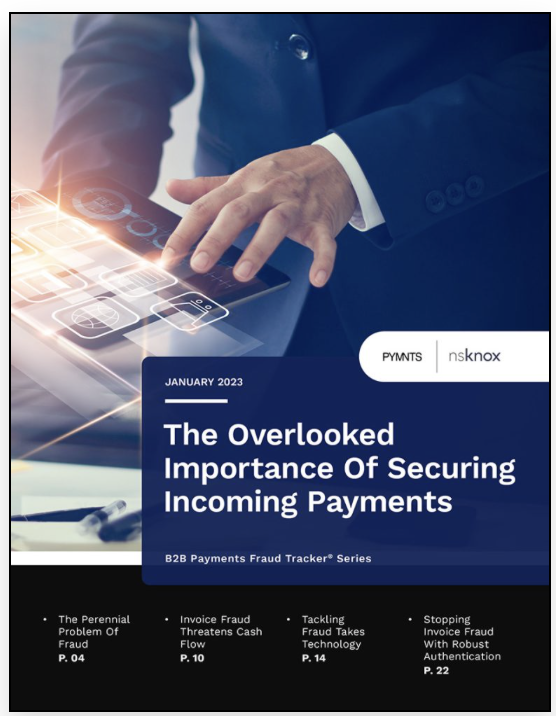59% of FIs Experienced Increase in Overall Fraud Rate
- Fraud is costly and pervasive
- In addition to outgoing payments, incoming payments are subject to fraud
- Companies deploying digital security solutions are seeing results
As our blog's readers know all too well, fraud is on the increase, and getting more sophisticated. As noted by PYMNTS.com:
Fraud is both costly and common. In the last two years, 52% of companies with at least $10 billion in revenue experienced some sort of fraud, according to a 2022 survey. For 1 in 5 of these companies, the most expensive fraud attack costs more than $50 million. The problem appears to be worsening: A recent PYMNTS survey found 59% of financial institutions (FIs) experienced an increase in their overall fraud rate compared to the previous year.

And, while there seems to be ample awareness of the growth and increased sophistication of fraud, many organizations are watching outgoing payments closely, but they are neglecting incoming/accounts receivable payments:
Criminals are constantly probing for vulnerabilities, looking to exploit any weaknesses. While companies have mostly focused on securing outgoing payments and their accounts payable (AP) systems, many have neglected safeguarding their incoming payments and accounts receivable (AR) systems. These companies are thus at risk for incoming payment fraud — and the risks can be considerable. A survey found that the average loss associated with internal fraud — one of the most common types of AR fraud — was nearly $1.8 million per case. Because incoming payments fraud often stems from inadequate internal controls, companies must modernize the systems that govern incoming payments.
PYMNTS reports that hybrid and remote work might be helping accelerate fraud trends.
According to a survey from the Canadian cybersecurity firm CIRA, 55% of cybersecurity professionals view their organizations as more vulnerable to cyberattacks because some, if not all, of their employees work remotely. The heightened risk stems from remote workers often using personal devices, insecure Wi-Fi networks and file-sharing platforms that are less secure than their corporate counterparts.
Banks' Role in Fighting Fraud at Businesses
PYMNTS have dedicated the latest edition of their “B2B Payments Fraud Tracker®” Series to ways companies can better secure their incoming payments systems via "robust digital solutions," as well as exploring benefits far beyond just fraud prevention.
Unsurprisingly to regular readers of our blog, PYMNTS research found that fraud limited international growth for 36% of companies using reactive, manual detection solutions, compared to just 5% of businesses using proactive, automated methods.
Unsurprisingly, the same research found that just 17% of those using manual solutions for digital identity verification and fraud prevention were at least very satisfied with the solution; for organizations using automated solutions, the portion of those satisfied soared to nearly half.

According to a PYMNTS survey, identity verification is one of the top three challenges companies face. Clearly, companies see the benefits of using digitally advanced AP and AR systems and are already adopting them "in droves." In fact, a recent PYMNTS survey shows 64% of companies that had not invested in AR previously are currently investing or plan to invest.
Banks as well need to further their fraud prevention efforts to not only assist businesses, but protect themselves. This includes deploying image forensic AI for check fraud -- as 81% of businesses still pay other firms via paper checks. This technology leverages key analyzers such as Check Stock Validation (CSV-AI), Automated Signature Verification (ASV-AI), and Alteration Analysis to enhance fraud detection capabilities -- protecting banks and their customers from losses.